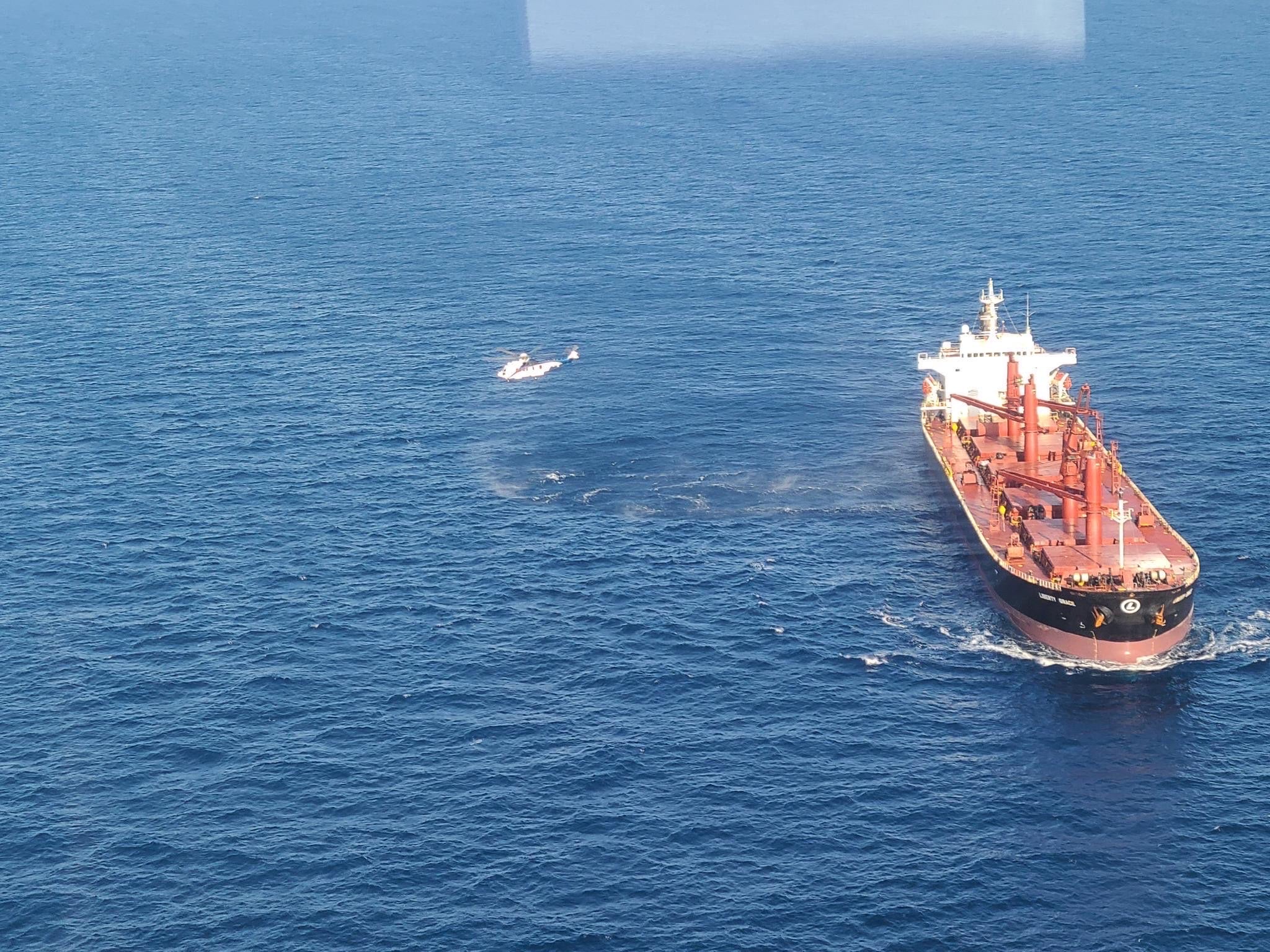Five Air Force pararescue jumpers were dispatched to an at-sea rescue mission this weekend after receiving a distress call for a U.K. mariner off the coast of Kenya.
The Warfighter Recovery Network, which helps find and treat isolated and injured personnel across vast distances, received an urgent request for aid Saturday on behalf of U.K. mariner Kevin Nixon, who was experiencing symptoms of a heart attack while onboard U.S. cargo ship Liberty Grace.
Combined Joint Task Force-Horn of Africa then deployed the five Air Force PJs aboard MV-22B Ospreys to rappel down to the ship and stabilize the patient.
Because the ship was 500 nautical miles east of Kenya in the Indian Ocean, a Marine Corps KC-130 tanker also had to provide aerial refueling for the Ospreys, which made this rescue even more noteworthy, according to a U.S. Africa Command press release.
“The tyranny of distance in Africa cannot be overstated, especially during life-threatening MEDEVAC situations,” said Maj. Gen. Gregory Anderson, AFRICOM’s director of operations, in the release. “While the primary mission of Warfighter Recover Network is to rescue our military personnel during operations in Africa, its robustness allows for unique missions like this.”

The PJs stayed on board the cargo vessel overnight while it maneuvered to within 150 nautical miles of Manda Bay Airfield, in Kenya.
The patient was then transported to the airfield on a Super Puma helicopter and later transferred to a medical center in Nairobi, Air Force Master Sgt. Trevor Clark, 82nd Expeditionary Rescue Squadron, said in the press release.
“The patient is doing well and I am so proud of my team for their part,” Clark said.
According to the press release, AFRICOM has made multiple improvements over the past few years to its Warfighter Recovery Network. Those changes include increased air capacity, multi-ship point-of-incidence response and adding additional medical and surgical capabilities that enable the recovery and treatment of personnel across long distances.
“This mission is exactly why we always train,” Clark said. “It demonstrated how the Warfighter Recovery Network can come together and save a life in the most remote places, when needed most.”
Rachel is a Marine Corps veteran and a master's candidate at New York University's Business & Economic Reporting program.





